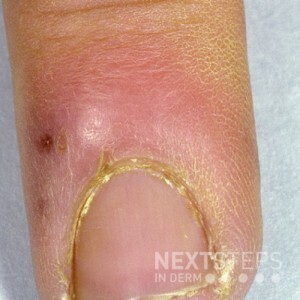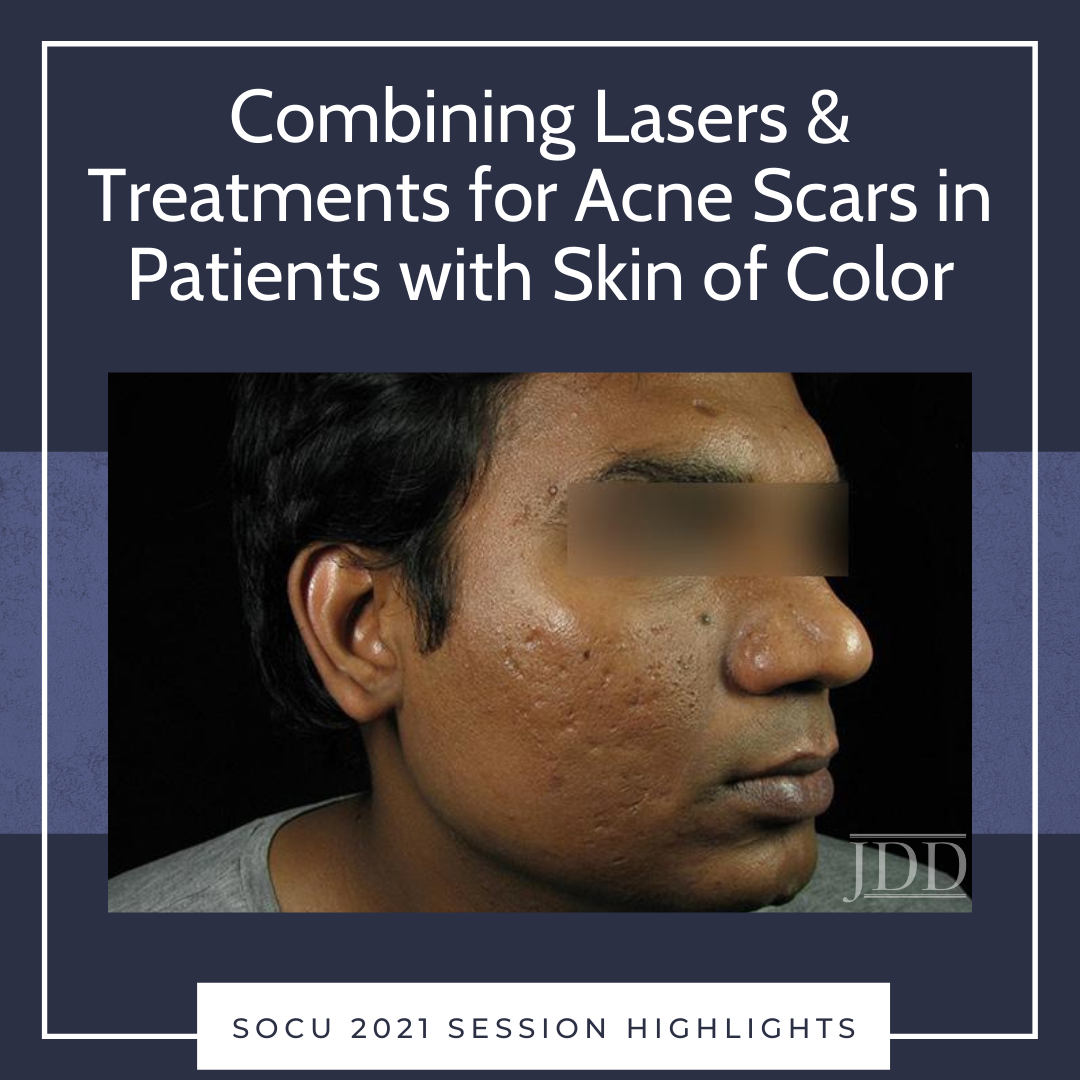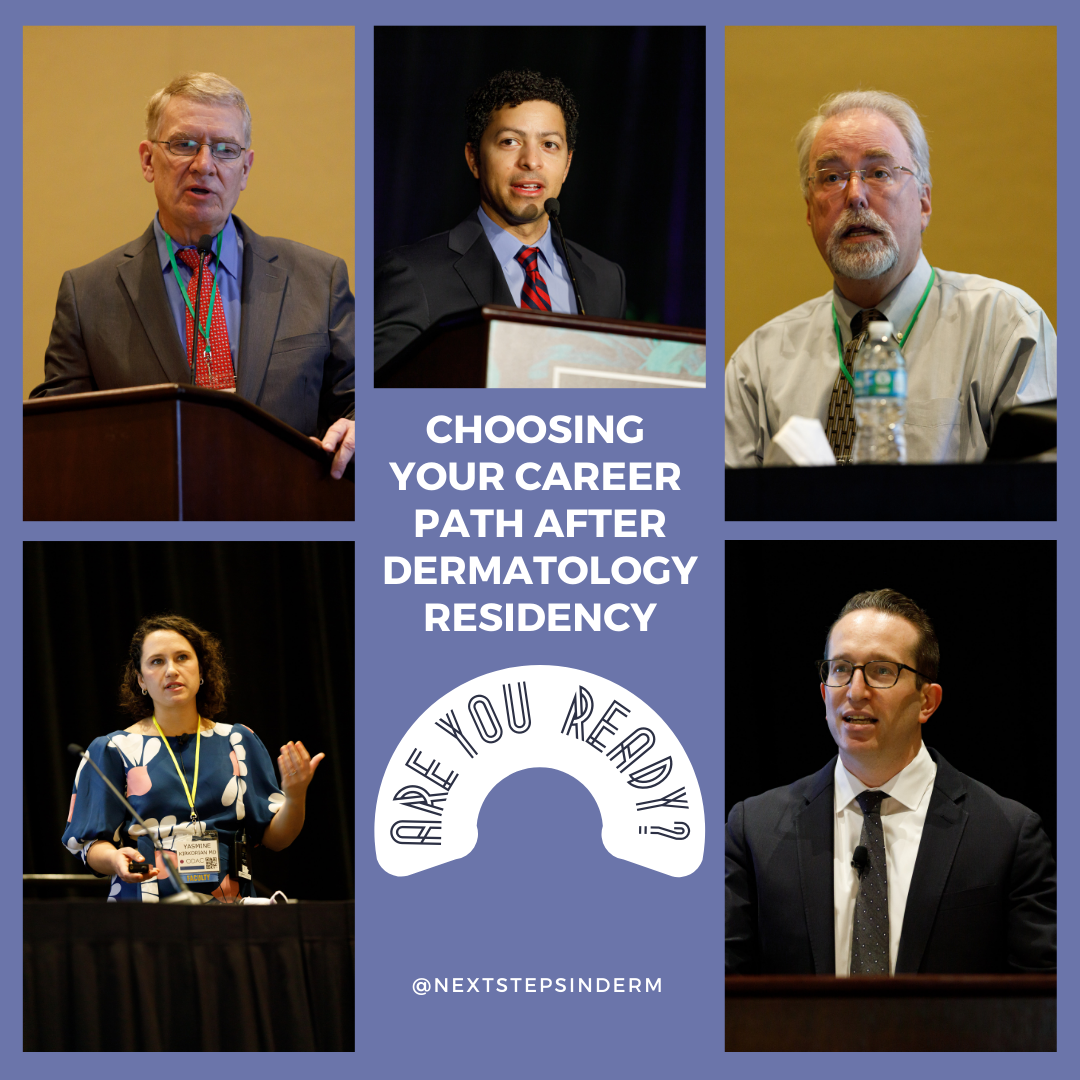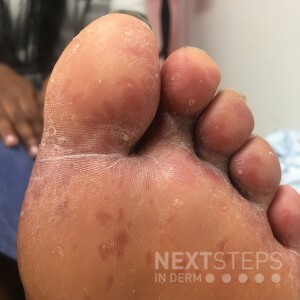Inflammatory lesion – Friday Pop Quiz 2/25
 This is child's finger represents a localized inflammatory lesion resulting from an abnormal response to cold. What may be associated with this condition?
A. Osteoma cutis
B. Diabetes
C. Lupus
D. Calcinosis cutis
E. Cryoglobulins
To find out the correct answer and read the explanation, click here.
Brought to you by our brand partner Derm In-Review. A product of S …
This is child's finger represents a localized inflammatory lesion resulting from an abnormal response to cold. What may be associated with this condition?
A. Osteoma cutis
B. Diabetes
C. Lupus
D. Calcinosis cutis
E. Cryoglobulins
To find out the correct answer and read the explanation, click here.
Brought to you by our brand partner Derm In-Review. A product of S …
 This is child's finger represents a localized inflammatory lesion resulting from an abnormal response to cold. What may be associated with this condition?
A. Osteoma cutis
B. Diabetes
C. Lupus
D. Calcinosis cutis
E. Cryoglobulins
To find out the correct answer and read the explanation, click here.
Brought to you by our brand partner Derm In-Review. A product of S …
This is child's finger represents a localized inflammatory lesion resulting from an abnormal response to cold. What may be associated with this condition?
A. Osteoma cutis
B. Diabetes
C. Lupus
D. Calcinosis cutis
E. Cryoglobulins
To find out the correct answer and read the explanation, click here.
Brought to you by our brand partner Derm In-Review. A product of S … Continue reading "Inflammatory lesion – Friday Pop Quiz 2/25"


 Next Steps in Derm, in partnership with ODAC Dermatology, Aesthetic and Surgical Conference, interviewed Dr. Adam Friedman (Professor and Chair of Dermatology who serves as Associate Residency Program Director, Director of Translational Research, and Director of the Supportive Oncodermatology Program in the GW Department of Dermatology) about the latest in Atopic Dermatitis (AD). Watch as he discu …
Next Steps in Derm, in partnership with ODAC Dermatology, Aesthetic and Surgical Conference, interviewed Dr. Adam Friedman (Professor and Chair of Dermatology who serves as Associate Residency Program Director, Director of Translational Research, and Director of the Supportive Oncodermatology Program in the GW Department of Dermatology) about the latest in Atopic Dermatitis (AD). Watch as he discu …  Acne scarring affects many of our acne patients and can lead to a great impact on quality of life and self-esteem. Treating acne scars aggressively in skin of color patients can be challenging, given the risk of side effects associated with different procedures. In her lecture entitled: Combining Lasers & Treatments for Acne Scars in Patients with Skin of Color – This is How I Do It, Dr. DiA …
Acne scarring affects many of our acne patients and can lead to a great impact on quality of life and self-esteem. Treating acne scars aggressively in skin of color patients can be challenging, given the risk of side effects associated with different procedures. In her lecture entitled: Combining Lasers & Treatments for Acne Scars in Patients with Skin of Color – This is How I Do It, Dr. DiA …  At the 2022 ODAC Dermatology, Aesthetic & Surgical Conference, a resident directed series included a panel on choosing your next steps after dermatology residency – Fellowship, Academics, or Private Practice, It’s Decision Time. The panel had an impressive group of dermatologists who answered a series of questions about paving our future paths in dermatology. Here are our panel members, in …
At the 2022 ODAC Dermatology, Aesthetic & Surgical Conference, a resident directed series included a panel on choosing your next steps after dermatology residency – Fellowship, Academics, or Private Practice, It’s Decision Time. The panel had an impressive group of dermatologists who answered a series of questions about paving our future paths in dermatology. Here are our panel members, in …  A healthy 3-year-old boy presents to the pediatrician with this eruption on the hands, feet, and oral mucosa. The mother states that he also has had a fever for the last day with malaise. Which type of virus is responsible for this condition depicted in the image?
A. Single stranded DNA
B. Double stranded DNA
C. Single stranded RNA
D. Double stranded RNA
E. Retrovirus
To find o …
A healthy 3-year-old boy presents to the pediatrician with this eruption on the hands, feet, and oral mucosa. The mother states that he also has had a fever for the last day with malaise. Which type of virus is responsible for this condition depicted in the image?
A. Single stranded DNA
B. Double stranded DNA
C. Single stranded RNA
D. Double stranded RNA
E. Retrovirus
To find o …